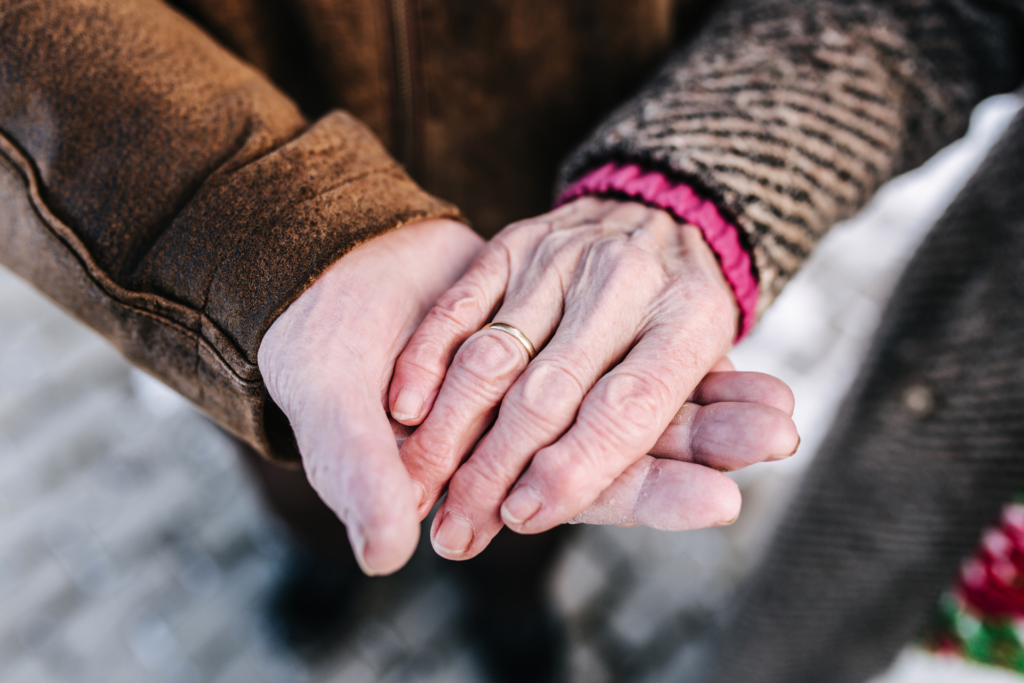“It just helped everything, because it got us all on one page.”

When Taylor’s grandmother, Mabel, began having increased health complications, she followed a pattern that many older adults experience: she began visiting the hospital more frequently. A cancer survivor, at first the family was concerned that her cancer had returned as she began to lose her appetite and sometimes vomit.
After several hospital stays, there wasn’t a clear direction, except that her health and quality of life were clearly declining. The idea of hospice was presented, but Mabel was resistant and fearful of the implications, which she believed might include medications she was not interested in taking.
That’s when Taylor, a registered nurse by trade, suggested palliative care. “I said, ‘Let’s get palliative care because it’s more resources and help.’”
Personalized care with Palliative Care at Home
Mabel’s local health system, Henry Ford Health, had recently launched its Palliative Care at Home program, and Taylor was able to connect her grandmother for an initial visit. Even though Mabel remained cautious about the care, Taylor explains that the patient-centered approach made all the difference. “They took their time with my grandma, and they let her talk. It wasn’t like a doctor’s appointment where it was rushed. They left their number where she could call 24/7 if there were questions. They listened to her, and they worked with her. I feel like it was a more personalized experience.”
Much to even Taylor’s surprise, the palliative care team immediately suggested a solution for her troublesome symptoms that kept bringing her to the hospital. “They knew exactly what it was,” Taylor shares. “She had been in the hospital three or four times, and palliative care came in and fixed it right away.” The simple answer? Mabel’s gastroesophageal reflux disease (GERD) was flaring up, and avoiding acidic food could help reduce her symptoms. The plan worked.
A bridge to better understanding and goals of care
Taylor notes that with the help of the palliative care team, her grandmother’s quality of life was “100% better” than it had been, which had special relevance as she transitioned to end-of-life care. “They made a goal for her to be able to sit in a chair to have their regular meeting,” Taylor recalls. “When they came back the next week, she couldn’t sit in the chair. They were wonderful, because I could not help my grandma understand. They talked to her and helped her see it for herself. They had a hospice talk, and they left it, let her think about it, and let her decide and understand it. No pressure at all.”
Along with this support, Taylor says that the team always treated her grandmother like family. “She looked forward to them coming,” she says. One nurse practitioner, she added, went out of her way to come for an in-person visit the same day a phone consultation wasn’t enough to address concerns. “You sometimes can’t get a same day doctor appointment, and if you went to urgent care or the ER it would be hours until you are seen,” she notes.
The team also focused on her wishes for care during her final weeks. “She was uncomfortable in the hospital. It was getting harder for her to leave the house. She didn’t want to die in a hospital, and she was able to pass away at home. She liked having them come to her,” Taylor says. “It was helpful to us as her caretakers, too. We were at a loss for what to do and how to help her ourselves. It just helped everything, because it got us all on one page.”
Taylor feels that her grandmother’s journey with Palliative Care at Home has cemented the idea for her that palliative care is a care option more people should know about. “I really want to see more programs available,” she says. “I have a whole handful of patients myself that could benefit from it. I want people to understand that it’s just more resources. It’s not hospice. Call them, have an interview, let them explain what it is.”
Note: The names in this story have been changed to protect the privacy of individuals.
